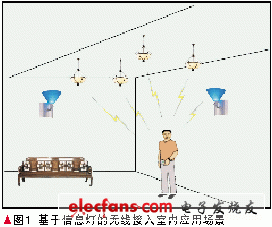Mobile communication technology is one of the fastest-growing communication technologies at present. Every breakthrough in concept and technology has achieved a leap in engineering and brought huge economic benefits [1]. The proposal of the cellular concept successfully realized the first generation mobile communication system [2]. The maturity of digital signal processing technology and devices has promoted the vigorous development of the second generation mobile communication marked by the Global System for Mobile Communications (GSM). The division of multiple access (WCDMA) commercial and multimedia technologies fully meet the functional requirements of the third generation mobile communication system at that time [3].
In order to enable future mobile communication systems to support greater system capacity, multi-antenna transmission and reception technologies represented by multiple input multiple output (MIMO) have been developed and become one of the research hotspots in the field of wireless communication [4-5].
Considering that the next generation mobile communication system not only requires faster transmission rate, larger system capacity and higher spectrum utilization rate than the third generation mobile communication system, but also considers lower power consumption and more complex network environment (Faced with the coexistence of multiple communication network systems) and other issues, therefore, in particular, four fundamental issues in the development of mobile communication must be completely resolved:
Difficult problem of base station location
The problem of high radiation power of mobile phones [6-8]
Strong radiation around traditional base stations
The radio spectrum below 5GHz is quite expensive
In order to better solve the above four "mobile bottleneck" problems in the development process of mobile communication and meet the high performance requirements of future mobile communication systems in terms of capacity and transmission rate, this paper takes multi-antenna signal processing as the core technology and proposes a The information-oriented (IL) future-oriented new mobile communication system architecture gives typical scenarios of indoor and outdoor access, and discusses related technologies around the information lamp network.
1 Overall system structure
Considering the reality that indoor and outdoor lighting has covered the urban area, as long as the user is in the urban area, there is a lighting close to it. Integrate the wireless access point in the lighting lamp to form an information lamp with information sending and receiving functions.
On the uplink, the signal received by the wireless access point based on the information light is transmitted to the central signal processor through the power line to complete the signal processing process. On the downlink, the information sent by the central signal processor is transmitted to the wireless receiving device (such as a mobile station, etc.) through the wireless access point in the power line and the information light.
1.1 Typical indoor and outdoor scenes
Indoor information lamp-based wireless access scenario is shown in Figure 1. A communication signal access point (AP) is integrated in the lighting lamp. Indoor wireless network access devices (such as notebook computers, PDAs, mobile phones, and other terminals) can be connected to one or Multiple access points establish connections at the same time. If the terminal device itself has multiple antennas, a MIMO system structure with distributed characteristics will be formed.

The wireless access point in the information lamp completes part of the signal processing function, and is connected to the power line for lighting, and communicates with the peripheral central signal processor through the power line. The communication signal is separated and loaded from the power line through the signal separator / coupler. The separated communication signal is transmitted to the central signal processor using the power line (or other media such as optical fiber after conversion), and the power signal and part of the distributed space-time signal are processed in the central signal processor.
An outdoor information lamp-based wireless access scenario is shown in Figure 2. Here, outdoor street lamps are selected as wireless access points, and mobile phone terminals, vehicle mounts, etc. access the network through multiple surrounding street lamp access points. The street lamp access point is connected to the central signal processor through power lines, optical fibers or coaxial cables to achieve communication with the backbone network.

Hand Mixer With Bowl can stand on the table and no need to hold the hand all the time. Besides, they can knead dough in long time and don't worry the dough will spatter.
Description for Hand Mixer With Bowl
120-150W
7 speeds
With Eject button
With two chromed beaters and dough hooks
With 1500ml plastic or stainless steel bowl
Carton box: 56.5*37*40.5cm 8pcs/ctn
20'GP: 2736pcs 40'HQ: 6480pcs

Hand Mixer With Bowl
Hand Mixer With Bowl,Hand Mixer With Plastic Bowl,Hand Mixer With Rotating Bowl,Hand Mixer With Stainless Bowl
Flying Electronic Co., Ltd , https://www.flyingelectronic.com
